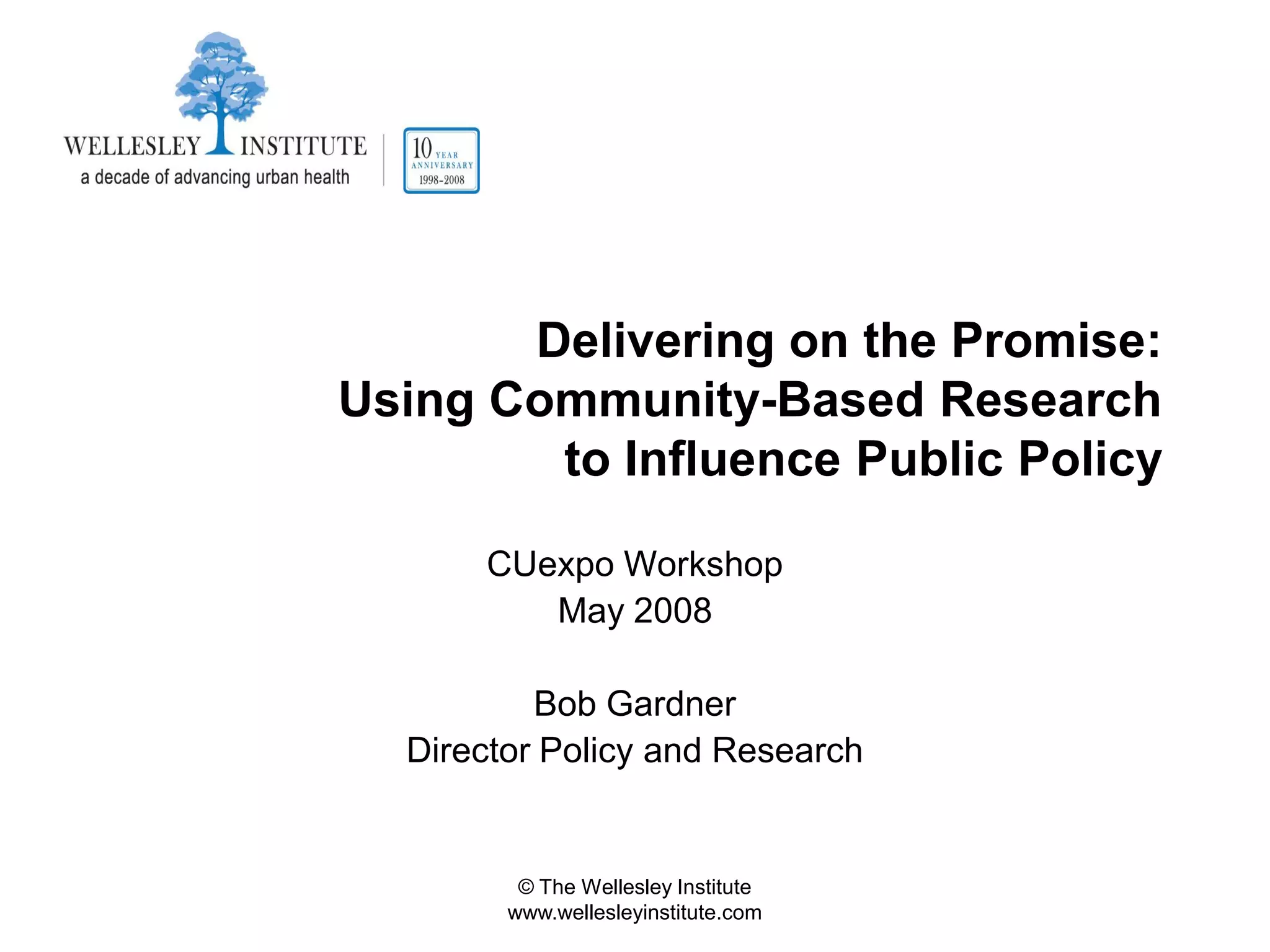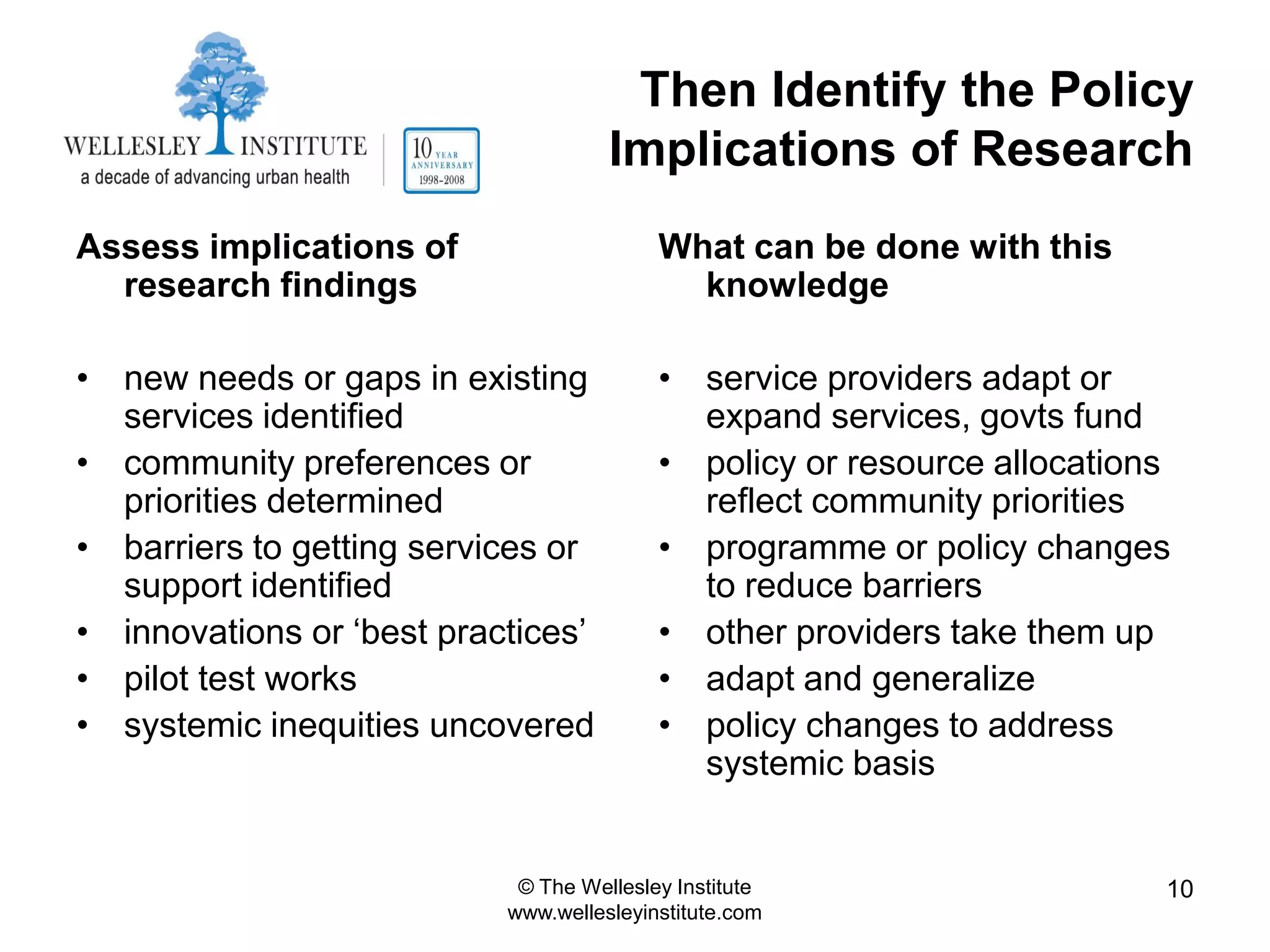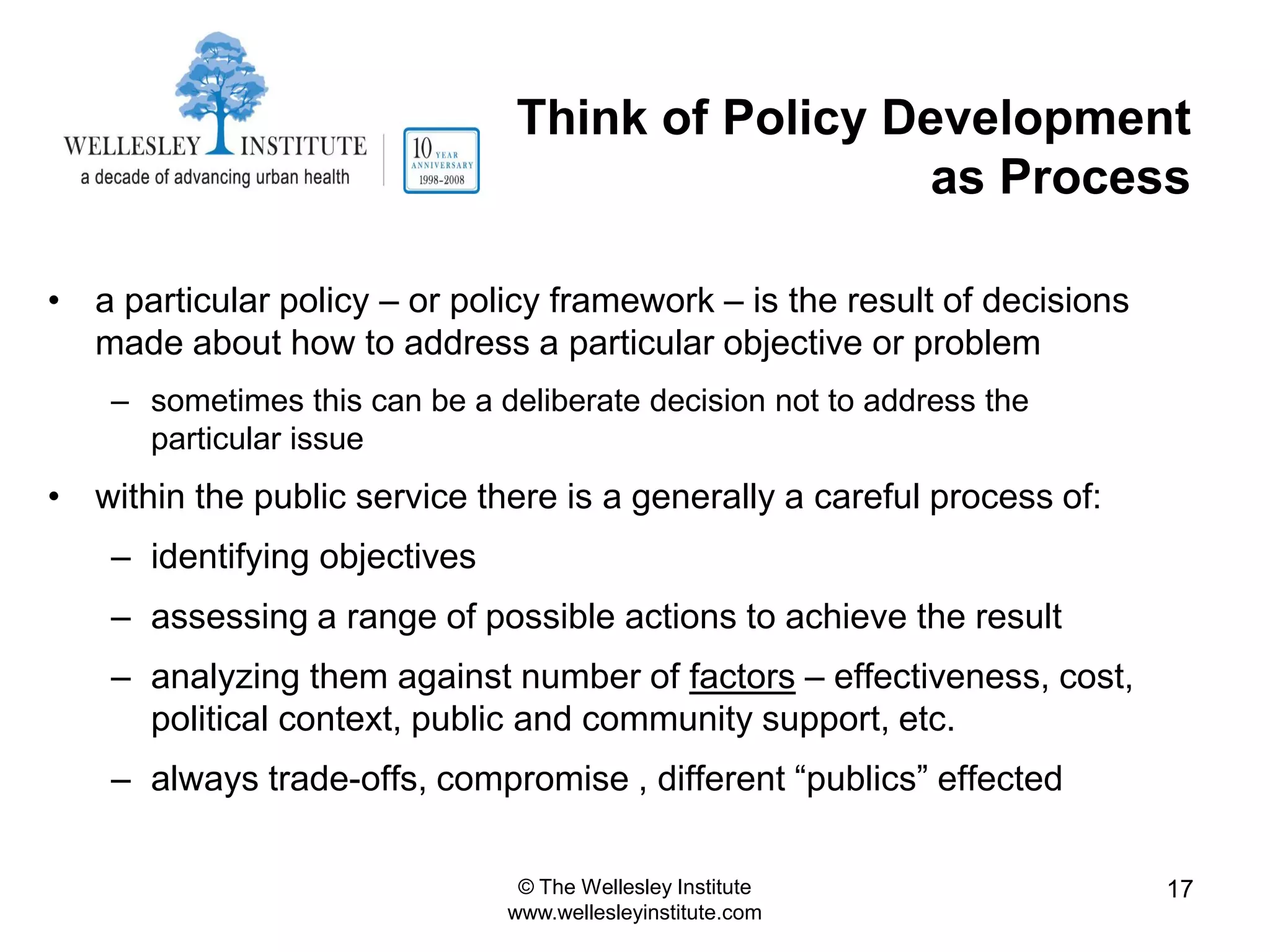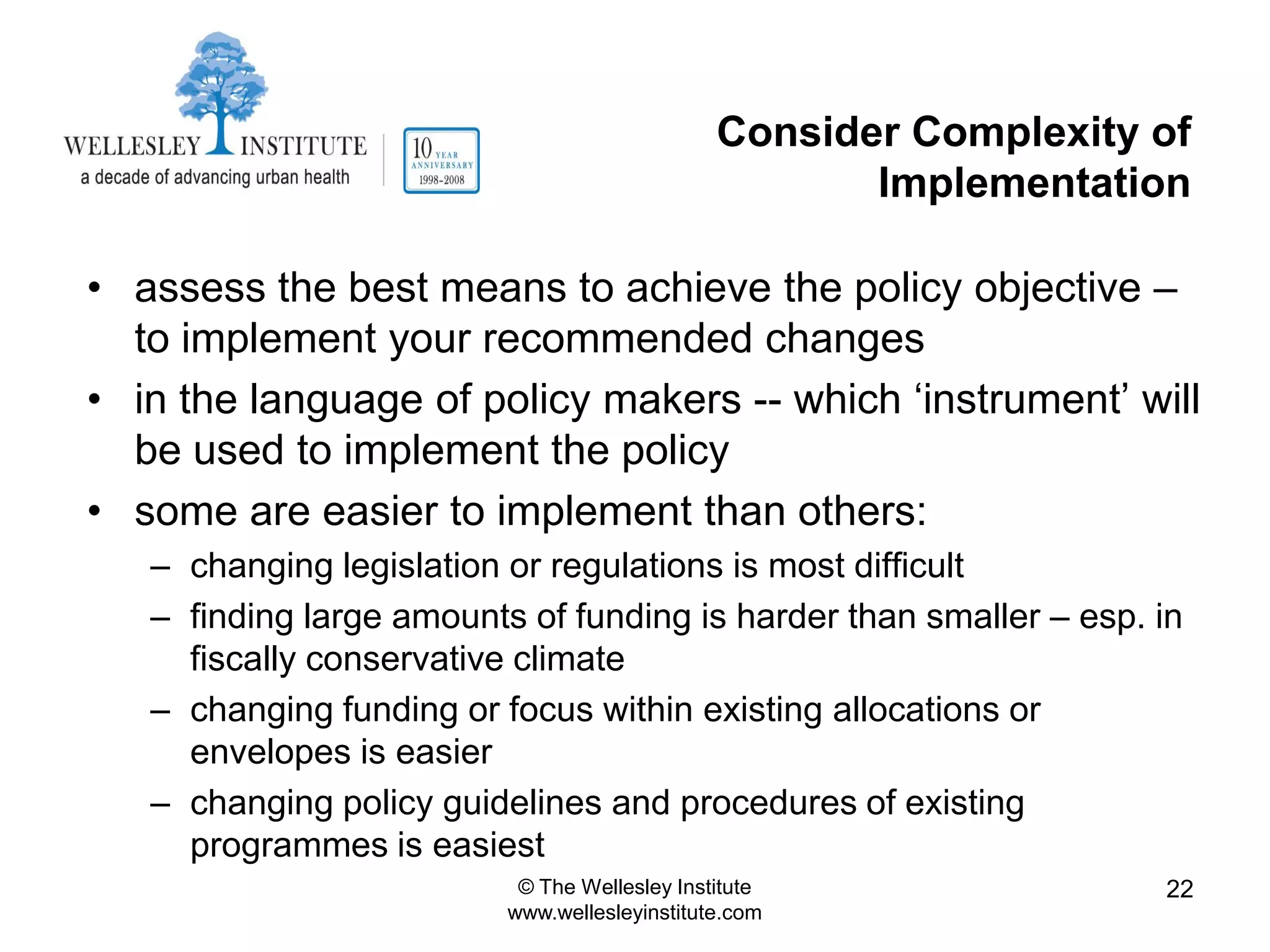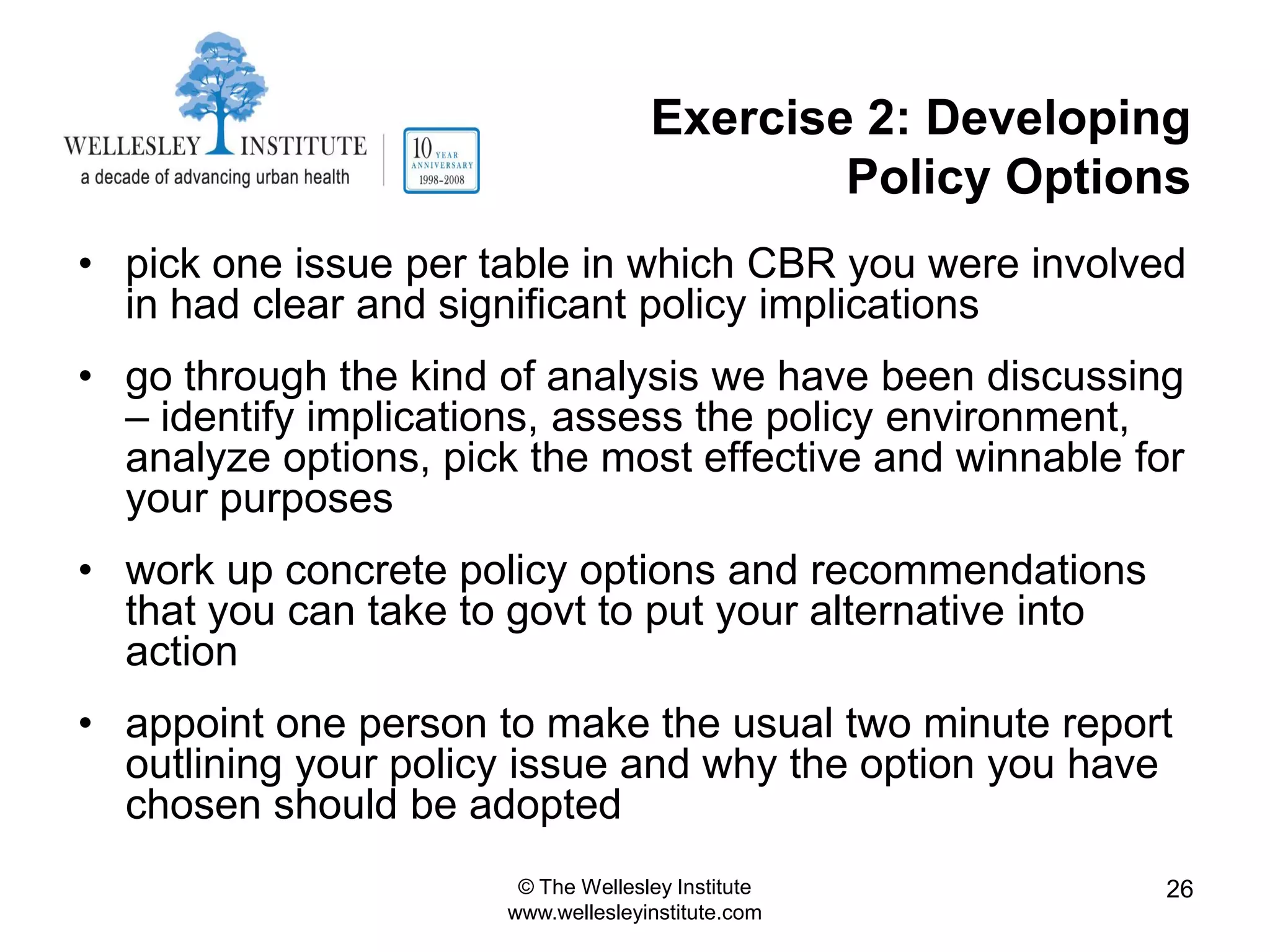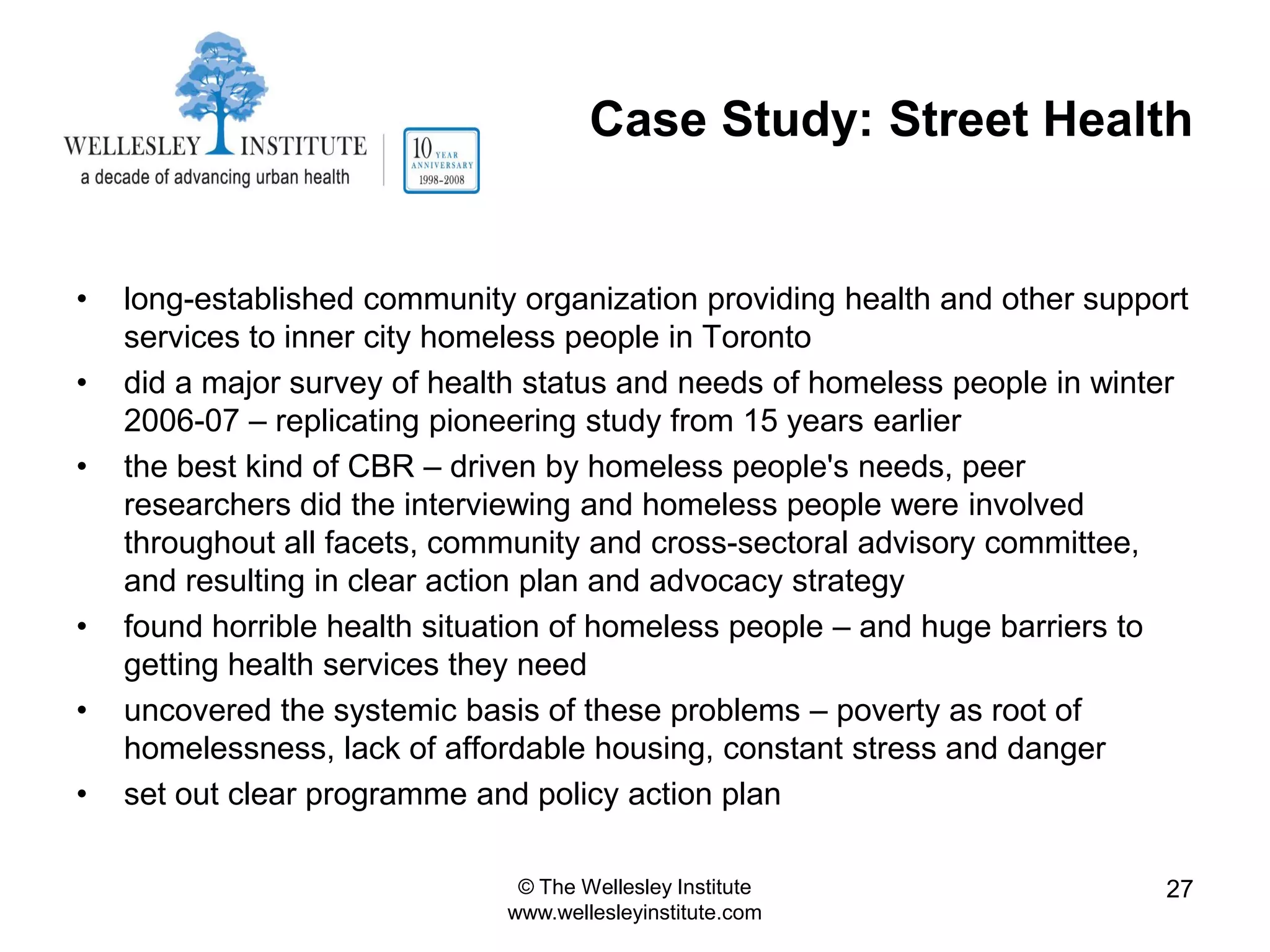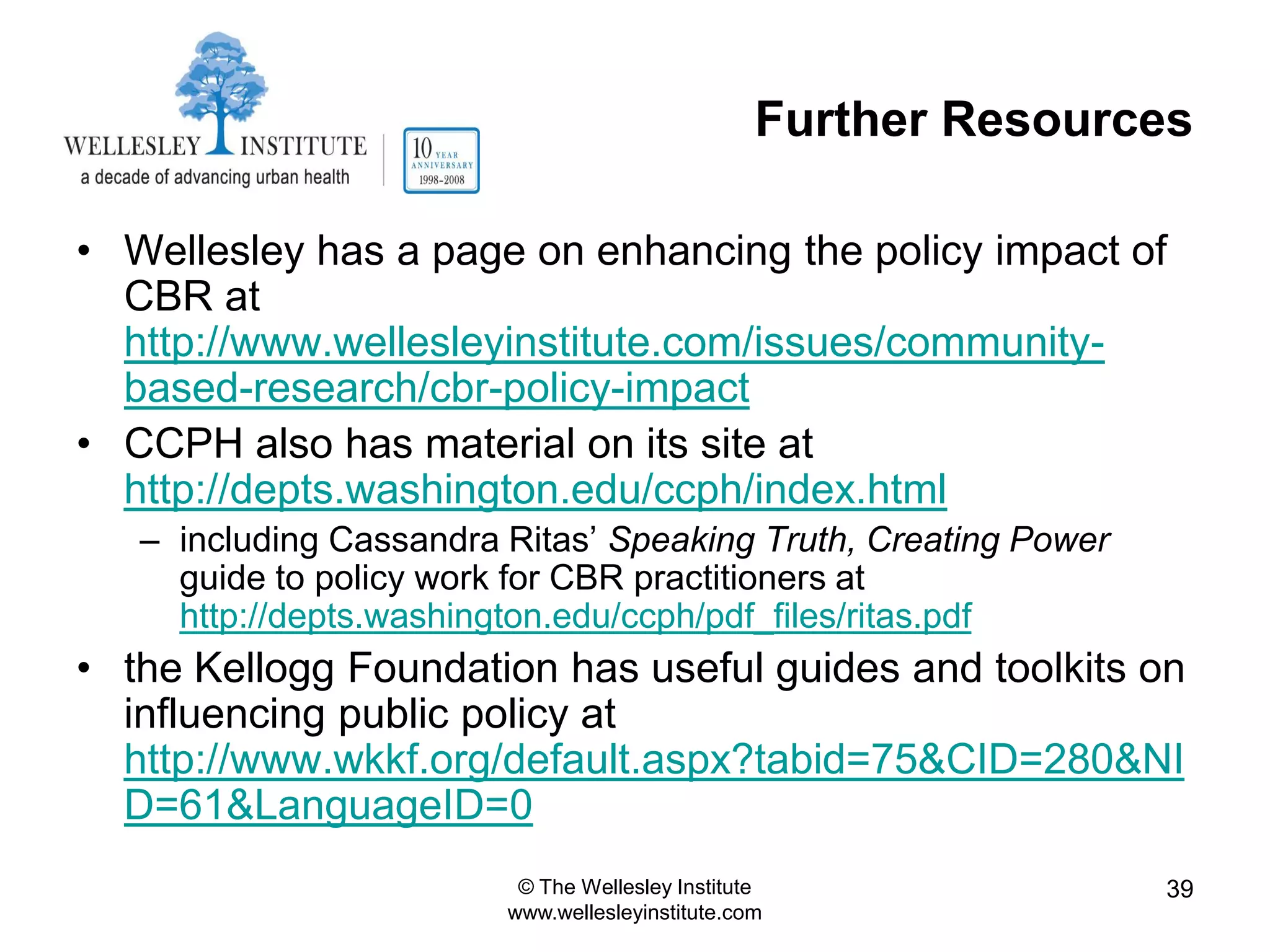The document outlines a workshop focused on maximizing the impact of community-based research (CBR) on public policy to address social and economic inequalities, particularly in health equity. It emphasizes the importance of identifying policy implications, developing actionable recommendations, and building effective advocacy strategies to influence policymakers. The Wellesley Institute supports CBR initiatives and aims to ensure research findings are translated into 'policy-ready' solutions that can drive meaningful change.
